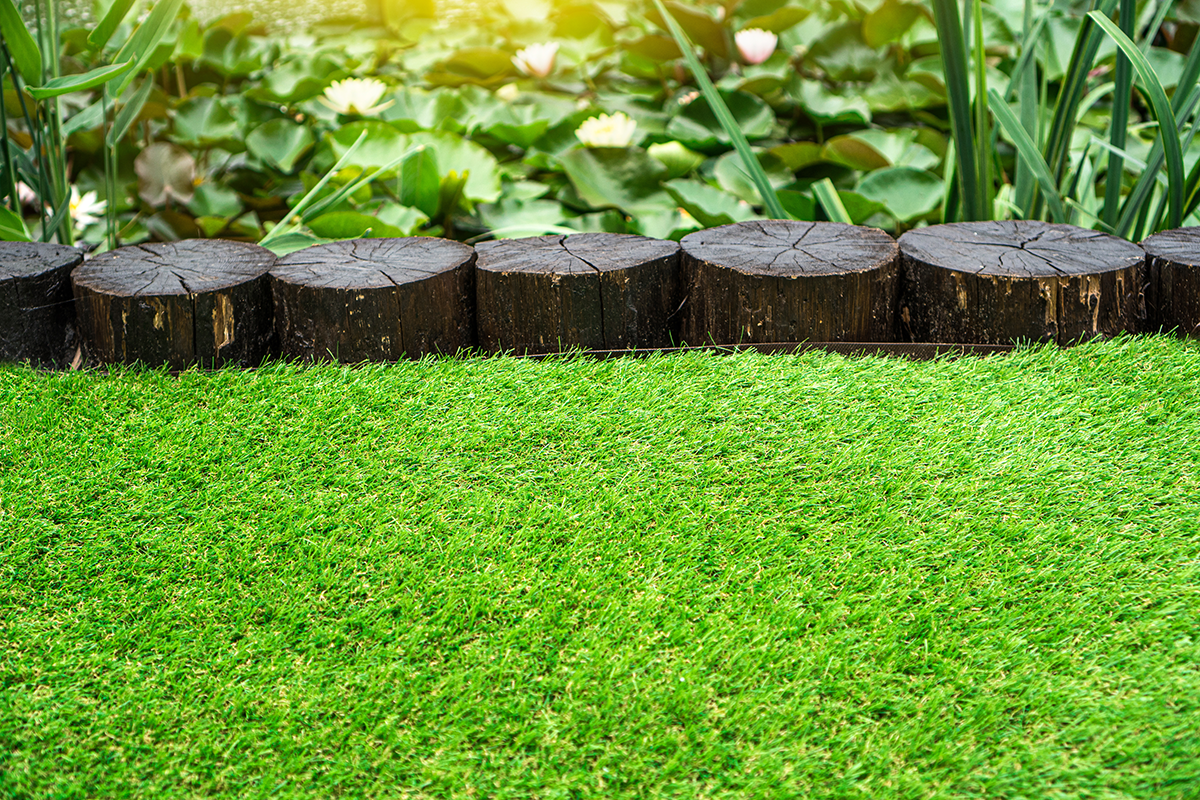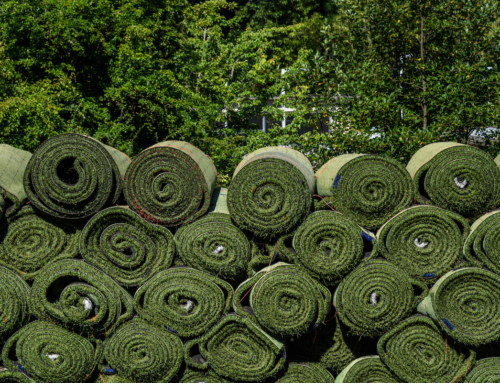Last Updated on October 14, 2022 by ReTurf
In recent years, there has been increasing demand for artificial turf, particularly for sports fields and home/commercial landscaping applications.
Some market analysis suggests that besides rising familiarity with artificial turf among homeowners and increasing sports field and stadium construction, this trend may be at least partially driven by the past few years of erratic weather patterns that have hit many parts of the U.S.—hard.
Whether it’s been an unusually cold winter or a record-breaking dry heat spell, many areas have seen some extreme weather in recent years. These unfortunate conditions have included extended periods of drought in some areas, while others have had to contend with too much rain and flooding. Adverse weather has wreaked havoc on many traditional grass lawns, leaving them yellow, patchy, full of weeds, or even completely dead.
The weather can cause all sorts of problems for property owners who take pride in their outdoor spaces; making it even more difficult to keep natural grass in top shape, or to simply maintain a healthy and green lawn.
And since there’s no sure way to predict the future, it makes sense that more and more people are looking for ways to make their property weather-resistant.
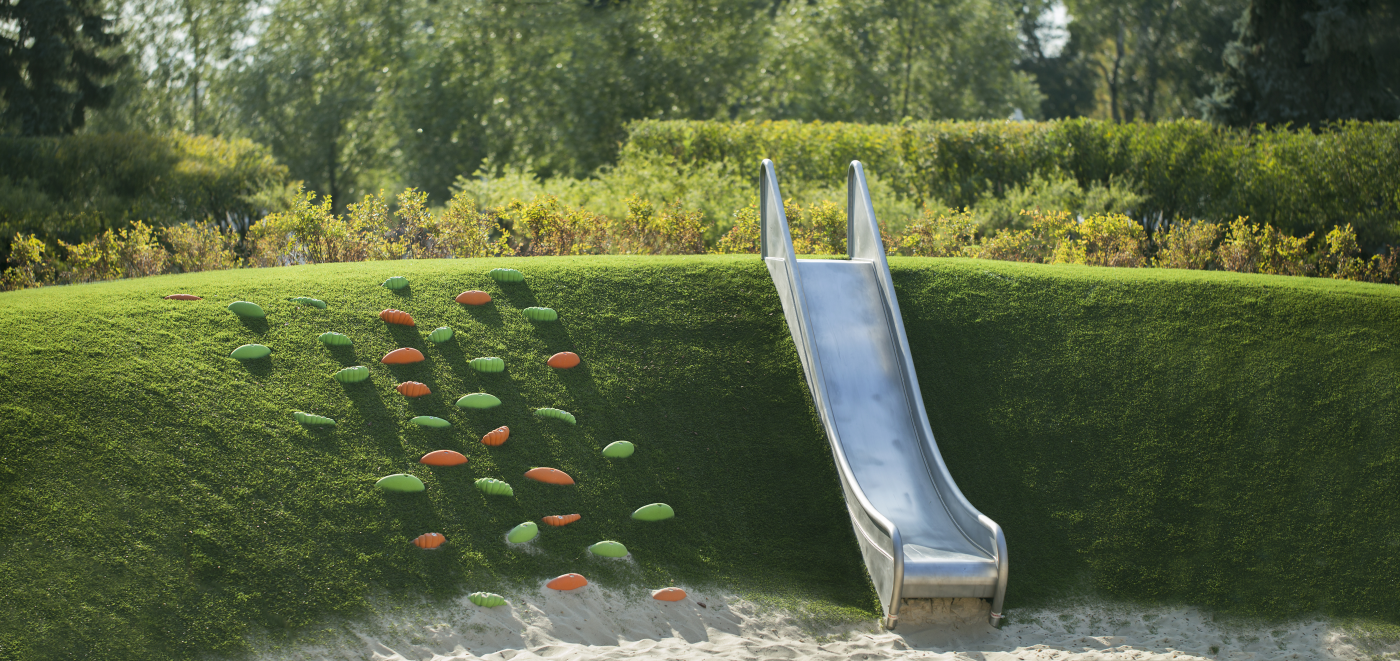
Artificial Grass for Residential & Commercial Lawns
With frequent and intense storms, as well as prolonged periods of drought, hitting many places around the country, keeping up a beautiful, well-manicured natural grass lawn or field is simply not as viable for many home and business owners as it once was.
Financially, it can be a significant burden to constantly water and care for natural grass, only to see it brown and die during a severe drought.
The amount of ongoing money—not to mention the ongoing effort and time—required to maintain a healthy natural grass lawn or field is already significant. But it has become even more so in the last few years, with unpredictable and extreme weather patterns making it that much harder to keep fragile natural grass alive, healthy, and looking good.
In contrast, artificial turf is much more resilient to extreme weather conditions like drought and heavy rain. It doesn’t require nearly as much water or maintenance, and it will stay green and beautiful after harsh weather conditions.
Artificial Turf for Sports Fields & Athletic Use
When it comes to sports fields, the challenges are even more evident—especially to their turf managers and groundskeepers. In addition to having to contend with the same weather conditions as homeowners and business owners, they also have to ensure that their fields are playable and safe for athletes.
Damage to sports fields inflicted by severe storms, droughts, and frosts are compounded by the fact that they must also contend with the wear and tear inflicted by athletes during games and practices.
What’s more: in order to keep natural grass fields in top condition, they often have to use huge amounts of water and chemicals, which can further damage the environment. And even with all of this investment, there is no guarantee that a natural grass field will be in good enough condition to host games or practices—or that it will even survive the season.
See: 7 Key Advantages of Artificial Turf in Sports Fields
Artificial Grass vs Mother Nature
Professional-grade artificial turf is resilient against:
- Heat
- Sunlight / UV rays
- Sustained heavy rains
- Hail
- Flooding
- Droughts
- Frosts
Properly-installed artificial grass can take on all of these without suffering the damage that regular grass would in the same conditions.
Too little rain? No problem.
Too much rain? Bring it on.
Hail? Prolonged heat and sun? Early frost? Artificial turf can take it—and then some.
Because artificial turf is not alive, it isn’t susceptible to the same problems as natural grass. It doesn’t rely on sunlight or water to survive, so it can withstand just about anything Mother Nature throws its way.
Heat / Sunlight
Most high-quality artificial turf products contain UV inhibitors to resist fading and degradation from prolonged exposure to sunlight. And while artificial turf products vary in their heat resistance due to differences in manufacturing and materials, most professional-grade turf products are rated to withstand temperatures at least 40 to 70 degrees hotter than the hottest temperature recorded on earth—in history.
So, whether you’re dealing with a heat wave or a cold snap, you can rest assured that your artificial turf will be just fine.
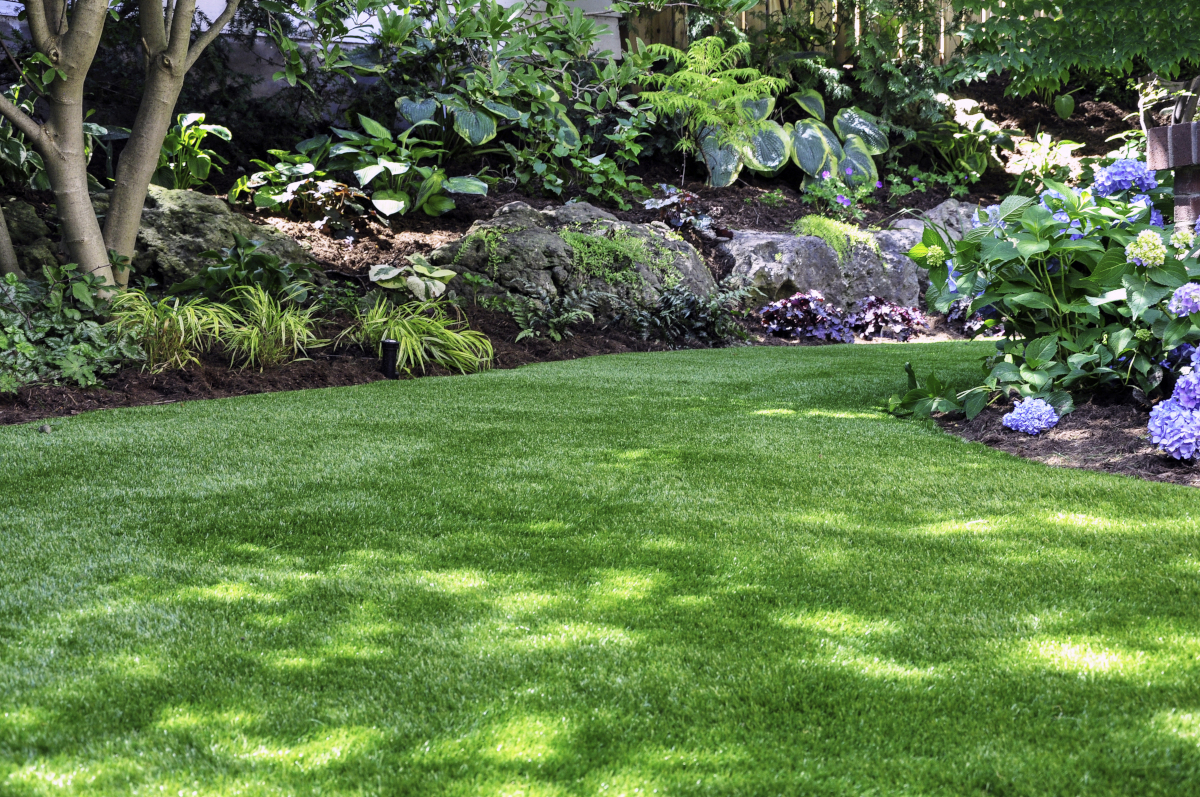
Rain Storms
Torrential rains that may cause puddles or flooding on natural grass fields drain away more quickly on a properly-installed artificial turf field. In fact, proper drainage is built into the design of a professional artificial turf installation. (DIY artificial turf installations may not have the same level of drainage, so it’s important to factor that into your decision if you’re considering a do-it-yourself project.)
Not only does artificial turf resist waterlogging better than natural grass, but it also dries more quickly after a rain. These qualities are essential for ensuring that playing fields are safe and playable, even after severe weather.
Weeds and pests are a constant problem for natural grass, especially after heavy rains and flooding. But they’re not an issue with artificial turf.
Not only does a professional artificial turf installation resist standing water due to a drainage system that gets rid of water more quickly, but the turf, infill, and underlayment create a physical barrier that helps prevent them from taking root in the first place. It also doesn’t provide the food and shelter that these unwanted visitors need to survive.
Furthermore, artificial turf itself is made of synthetic materials that pests aren’t attracted to like natural grass. (It can even help if you deal with pests like moles, voles, and gophers in your area.)
So, whether you’re dealing with light rain showers or a full-on downpour, you can rest assured that your professionally-installed artificial turf will weather it just fine.

Frosts
Even early/unexpected frosts that would normally kill off grass do not present a problem for high-grade synthetic turf, as the fibers used in their manufacture are designed to resist such damage.
In climates that receive heavy snow or deep freezing, ice and ice and snow removal with a snowblower, de-icer, or a lightweight plow is recommended to keep the turf in good condition. But dead or dying grass, yellow patches, and brown spots are simply a thing of the past after you install artificial turf—whether caused by frost or otherwise.
Drought / Water Restrictions
Water scarcity has also been a major factor in the increased demand for artificial turf. In areas around the country that have been especially hard hit by drought, many municipalities have been imposing restrictions on irrigation.
And while droughts may brown and kill natural grass, artificial turf will stay green and lush all season long, with no need for extra watering.
As a result, homeowners, businesses, and organizations are turning to artificial grass as a low-maintenance, drought-resistant alternative—one that doesn’t require them to use large amounts of water to keep it in perfect condition.
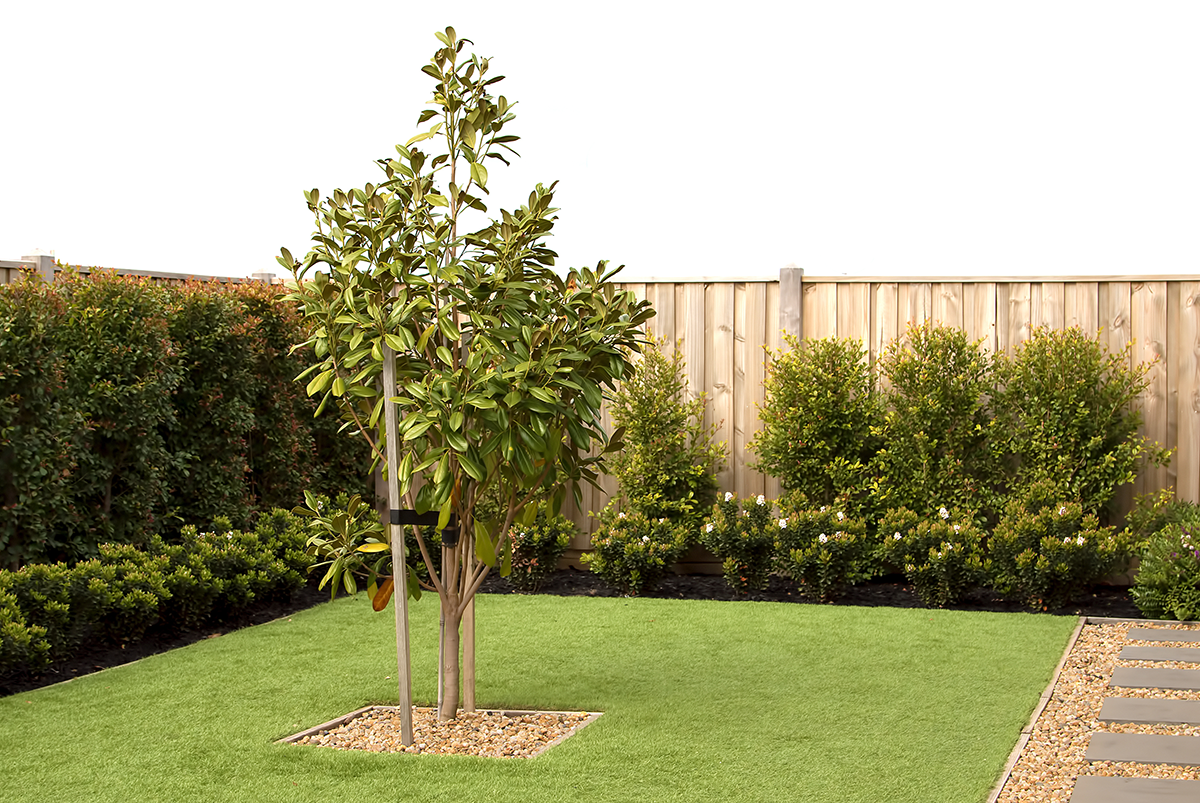
Other Advantages of Synthetic Turf Vs Regular Grass
While some are initially drawn to artificial turf because of the environmental benefits, they soon realize that it offers a number of other advantages as well:
- Professional-grade turf is extremely durable, meaning that it can withstand heavy foot traffic, and even the rigors of all kinds of sports without showing the wear and tear of natural grass or consumer-grade (“Big Box Store”) artificial grass.
- It is extremely versatile and can be used in a variety of settings and for a variety of applications, both indoors and out.
- It is much easier to care for than natural grass, and it can be used in a variety of settings, including high-traffic areas that would quickly damage natural grass.
- It doesn’t require the use of fertilizers, harsh lawn chemicals, or large volumes of water to stay healthy and beautiful.
- It requires very little maintenance overall compared to regular grass, which is ideal for property owners who don’t have the time or resources to invest in caring for a natural grass lawn or field.
- Professional-grade artificial grass is resilient against damage from weather, pests, and wear and tear that would harm regular natural grass, making it a smarter investment in the long run.
As a result, an increasing number of schools, businesses, sports clubs, and other organizations are turning to artificial turf as a more sustainable and eco-friendly alternative.
While the initial cost of installation may be higher than that of natural grass, the long-term savings in terms of water and ongoing maintenance costs can be significant. For financially-savvy homeowners and businesses, synthetic turf is a smart investment that can pay for itself many times over in the years to come.
Advantages of Installing Used Artificial Turf
Using recycled artificial turf also helps to lower the cost and the environmental impact even further. It also keeps perfectly-good turf (and infill) with many years or even decades of life left in it out of our national landfills.
With professional installation, properly recovered, rehabilitated, recycled turf can have a comparable lifespan to new turf, making used artificial turf a truly sustainable solution not just for sports fields—but for homeowners and business owners as well. (You can learn more about the advantages of used artificial turf here.)
The Future of Synthetic Grass
As more people become aware of the benefits of artificial grass (and recycled artificial turf), the demand for it is sure to continue growing—not just here in America, but around the world.
Artificial grass isn’t “just” a definite solution to the water scarcity problem that faces most lawns and fields; it is an eco-friendly alternative that offers a number of other advantages to the homeowners, businesses, and organizations who choose to install it.
Whether you’re looking to save money, time, or water, or are just looking for a more sustainable “green” option that will stand up to just about anything that the weather, the elements, rowdy sports fans (or even your kids or pets) can throw at it, synthetic turf is a smart solution.
For more information on new or used artificial turf, supplies, infill, removal, or installation, contact ReTURF. We’d be happy to answer any of your questions and help you find the perfect solution for your needs. Give us a call at (828) 518-5787 or click here to email us.

